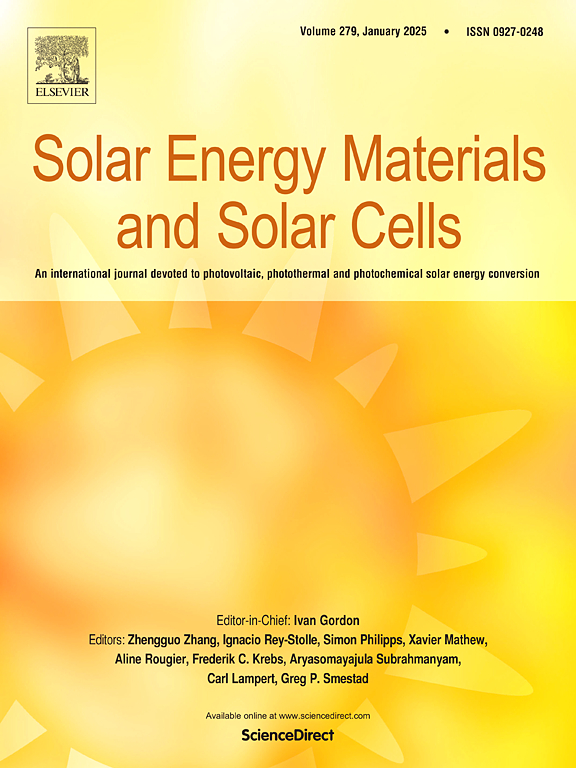用双侧加热器生长300 mm低氧n型再充电奇克拉尔斯基硅晶体
IF 6.3
2区 材料科学
Q2 ENERGY & FUELS
引用次数: 0
摘要
随着全球光伏产业的快速发展,Cz-Si太阳能电池的性能不断提高,对Cz-Si晶体的质量提出了更高的要求。特别是,用于隧道氧化物钝化接触(TOPCon)太阳能电池的300 mm n型Cz-Si晶圆的间隙氧浓度需要进一步降低,以避免高温加工过程中可能产生的氧相关缺陷,如硼扩散。为此,本研究进一步优化了所提出的具有双侧加热器的加热区结构配置,并结合数值模拟和现场实验,揭示了加热区结构对硅熔体温度分布和Cz-Si晶体间隙氧浓度的影响。因此,可以在间隙氧浓度低于8 ppm,最低低于5 ppm的条件下,生长出冠军级300 mm n型再充电Cz-Si晶体。此外,基于间隙氧浓度低于10 ppma的300 mm n型Cz-Si晶片的n型TOPCon太阳能电池的电性能表现优异,缺缺率较低,这也证明了所提出的加热区结构对于生长300 mm n型再充电Cz-Si晶体的有效性。本文章由计算机程序翻译,如有差异,请以英文原文为准。
Growth of 300 mm n-type recharged Czochralski silicon crystal with low oxygen content by dual side-heaters
With the rapid progressing of global photovoltaics (PV) industry, the performance of Czochralski silicon (Cz-Si) solar cells continues to improve, which puts forward higher requirements for the quality of Cz-Si crystals. In particular, interstitial oxygen concentration of 300 mm n-type Cz-Si wafers for Tunnel Oxide Passivating Contact (TOPCon) solar cells needs to be further reduced to avoid possible oxygen-related defects caused by high-temperature processing such as boron diffusion-in. For this purpose, this study further optimized the configuration of the proposed heating zone structure with dual side-heaters for 300 mm n-type recharged Cz-Si crystal growth, combined with numerical simulations and on-site experiments, revealing the influence of heating zone structure on the temperature distribution of silicon melt and interstitial oxygen concentration in Cz-Si crystal. Consequently, the growth of champion-grade 300 mm n-type recharged Cz-Si crystals with interstitial oxygen concentration below 8 ppm with the lowest value below 5 ppm can be realized. In addition, electrical performance of n-type TOPCon solar cells based on the 300 mm n-type Cz-Si wafers with the interstitial oxygen concentration lower than 10 ppma have presented excellent electrical performance and lower defect ratio, which also demonstrates the effectiveness of the proposed heating zone structure for the growth of 300 mm n-type recharged Cz-Si crystals.
求助全文
通过发布文献求助,成功后即可免费获取论文全文。
去求助
来源期刊

Solar Energy Materials and Solar Cells
工程技术-材料科学:综合
CiteScore
12.60
自引率
11.60%
发文量
513
审稿时长
47 days
期刊介绍:
Solar Energy Materials & Solar Cells is intended as a vehicle for the dissemination of research results on materials science and technology related to photovoltaic, photothermal and photoelectrochemical solar energy conversion. Materials science is taken in the broadest possible sense and encompasses physics, chemistry, optics, materials fabrication and analysis for all types of materials.
 求助内容:
求助内容: 应助结果提醒方式:
应助结果提醒方式:


